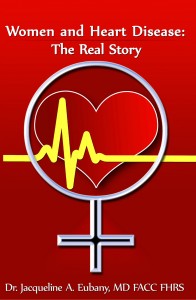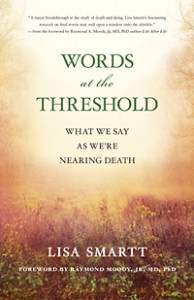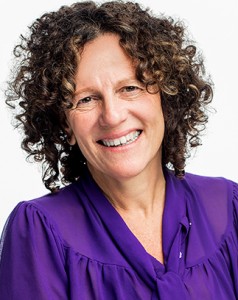Stand Your Ground: How Grounding Promotes Vibrant Health (and Protects You from Your Cell Phone’s Harmful Energy)
“Grounding,” also known as “earthing,” is a technique rooted in ancient wisdom that has a powerful healing effect on your body. Dr. Stephen Sinatra and coauthor Tommy Rosa explain how it works—and why it’s especially needed in the era of electronic devices.
New York, NY (November 2017)—When was the last time you lingered barefoot in the grass, in the garden, or at the edge of the ocean? If you’re like many people, it’s probably been a while. Most of us live artificial, climate-controlled, indoor lives, and the time we spend connected (literally) to the Earth is fairly negligible. That’s not good, say Stephen Sinatra, MD, and Tommy Rosa. They say we should be spending at least half an hour each day with our feet touching the Earth—a practice known as “grounding.”
“Staying more connected to the Earth is especially important now that we’re constantly exposed to electromagnetic fields generated by electrical and wireless devices,” notes Dr. Sinatra, coauthor along with Tommy Rosa of Health Revelations from Heaven: 8 Divine Teachings from a Near-Death Experience (Rodale Books, 2017, ISBN: 978-1-635-65066-2, $14.99). “This radiation causes all sorts of health problems, likely including cancer. Grounding can help protect the body from it and in general promotes vibrant health.”
Grounding, also known as earthing, simply means connecting yourself physically to the energetic fields of the Earth. Healers in many cultures throughout history have realized the connection between the natural energy of our planet and the natural energy of the human body. Today, the concept is enjoying a revival of sorts.
Dr. Sinatra has written extensively on the subject of grounding over the years. That’s why he was so astounded when he met Mr. Rosa and discovered that he had been taught about the benefits of grounding during his life-altering near-death experience (NDE) following a serious car accident. In fact, grounding was one of the eight “health revelations” Mr. Rosa received from his otherworldly Teacher.
“I learned that Earth has a vibration that heals the body,” says Mr. Rosa. “In fact, I was specifically told that the more we ground ourselves to the planet, the more we heal ourselves from everyday radiation, toxicity, inflammation, stress, sleeping problems, and pain.”
Dr. Sinatra concurs. Based on research and his own observations as an integrative cardiologist, he says grounding has numerous health benefits. For example:
Grounding thins the blood. When blood thickens like ketchup, it can promote clotting and inflammation. Grounding has been found to cause red blood cells to achieve a consistency more like red wine. Since thick blood, with inflamed blood vessels, is the cardinal risk factor for heart disease, it makes sense to ground.
It disarms the free radicals that sicken and age us. Walking barefoot activates the KI 1 (Kidney 1) pressure point on the bottom of the foot. This activates the meridian that runs up your leg, over your back, through your kidneys, and up to your neck, ending in the roof of your mouth. This increases the flow of electrons through your body that work like antioxidants.
It restores the body’s healing potential. In 2012 Dr. Sinatra and other researchers published a review study on the health implications of grounding in the Journal of Environmental and Public Health. This study concluded that, for many, daily grounding activity can:
– Decrease inflammation.
– Reduce or eliminate chronic pain.
– Improve sleep.
– Improve blood pressure.
– Relieve muscle tension and headaches.
– Lessen hormonal and menstrual symptoms.
– Speed healing after surgery and prevent bedsores.
– Protect against potentially health-disturbing environmental electromagnetic fields.
– Balance the autonomic nervous system by decreasing sympathetic and increasing parasympathetic nervous activity. When dealing with challenges and stressful situations, we use our sympathetic nervous system and expend energy. When we’re calm and relaxed, our parasympathetic nervous system kicks in, so the body can repair and restore itself.
It lifts our spirits. Researchers at the University of California, Irvine, did a study to determine if grounding could improve mood. The findings, published in the April 2015 issue of Psychological Reports, suggest the answer is yes.
Grounding isn’t difficult, of course. All you have to do is go outside, preferably barefoot, and stand on the Earth. The challenging part is to find the time to do so at least 150 minutes a week (although, admit it, you’re probably wasting that much time on Facebook or in front of the TV) and get in the habit of daily grounding. Dr. Sinatra offers the following tips:
Walk barefoot as often as possible. If you can’t go barefoot, wear thin-soled, plain leather shoes. Avoid rubber soles like tennis sneakers or the neoprene found in running shoes, as these will keep you disconnected from the Earth.
Stand on the grass, soil, sand, concrete, or brick at least half an hour daily. You might get in the habit of going outside to have your morning coffee. You can sit outside to do your daily meditation. You can lie under the stars.
Look for fun ways to immerse yourself in nature. You can ground while gardening, camping, hiking, walking on the beach, or swimming in the ocean, a lake, or a river.
Reduce the time you spend toggled to devices and electronic ways of communicating.Don’t be a slave to your smartphone (and turn it off when not in use). It’s better to use plug-in landlines than cordless phones. Also, turn off your router at night. And move your clock or radio away from the bed so EMFs aren’t directed at your head.
If you’re really serious about it, bring grounding indoors. You can sleep, work, or relax indoors on special conductive sheets or mats connected to the Earth with wires plugged into a grounded wall outlet or a ground rod outside.
When grounding, cultivate an appreciative relationship with Mother Earth. Notice the rhythm of life and feel a sense of belonging to the natural world. Feel gratitude.
“Grounding is one of the easiest and most uplifting ways to improve your health,” says Dr. Sinatra. “Through this simple and powerful method, we can remember our connection to nature and, in doing so, reclaim aspects of our health that need rejuvenation. Where there is Earth, there is healing.”
# # #
About the Authors:
Dr. Stephen Sinatra and Tommy Rosa are coauthors of Health Revelations from Heaven.
Stephen T. Sinatra, MD, FACC, is a cardiologist and psychotherapist with 40 years of clinical experience treating heart disease. He is the host of HeartMDInstitute.com and the creator of Vervana Marketplace (vervana.com), which offers wholesome, high-quality products from all over the world. He lives in St. Petersburg, FL.
Tommy Rosa is a spiritual counselor who helps people conquer their fear of death. He is also the founder of the Unicorn Foundation in Stuart, Florida, a nonprofit foundation dedicated to educational endeavors and community outreach projects. He lives in Stuart, FL.
About the Book:
Health Revelations from Heaven: 8 Divine Teachings from a Near-Death Experience(Rodale Books, 2017, ISBN: 978-1-635-65066-2, $14.99) is available from major online booksellers. For more information, please visit www.healthrevelationsbook.com.










 Post by Dr Jacqueline Eubany, MD FACC FHRS
Post by Dr Jacqueline Eubany, MD FACC FHRS

 An excerpt from Words at the Threshold by Lisa Smartt
An excerpt from Words at the Threshold by Lisa Smartt